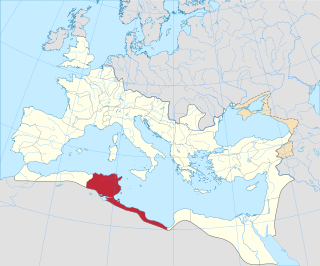
The province of Grosseto is a province in the Tuscany region of Italy. Its capital is the city of Grosseto. As of 2013 the province had a total population of 225,098 people.

Pianosa is an island in the Tuscan Archipelago in the Tyrrhenian Sea, Italy. It is about 10.25 km2 (3.96 sq mi) in area, with a coastal perimeter of 26 km (16 mi).

Montecristo, also Monte Cristo and formerly Oglasa, is an island in the Tyrrhenian Sea and part of the Tuscan Archipelago. Administratively it belongs to the municipality of Portoferraio in the province of Livorno, Italy. The island has an area of 10.39 km2 (4.01 sq mi), is approximately 4.1 km (2.5 mi) wide at its widest point, and is 3.4 km (2.1 mi) long; the coasts are steep, and extend for 16 km (9.9 mi). The island is a state nature reserve and forms part of the Tuscan Archipelago National Park.

September 14 - Eastern Orthodox liturgical calendar - September 16

The Tuscan Archipelago is a chain of islands between the Ligurian Sea and Tyrrhenian Sea, west of Tuscany, Italy.

Olivia of Palermo, Palermo, 448 – Tunis, 10 June 463, while according to another tradition she is supposed to have lived in the late 9th century AD in the Muslim Emirate of Sicily is a Christian virgin-martyr who was venerated as a local patron saint of Palermo, Sicily, since the Middle Ages, as well as in the Sicilian towns of Monte San Giuliano, Termini Imerese, Alcamo, Pettineo and Cefalù.

San Pietro in Ciel d'Oro is a Catholic basilica of the Augustinians in Pavia, Italy, in the Lombardy region. Its name refers to the mosaics of gold leaf behind glass tesserae that decorate the ceiling of the apse. The plain exterior is of brick, with sandstone quoins and window framing. The paving of the church floor is now lower than the modern street level of Piazza San Pietro in Ciel d'Oro, which lies before its façade.

Saint Proculus was a bishop of Verona who survived the persecutions of Diocletian. He died of natural causes at Verona. He is commemorated on December 9.

Saint Proculus (Proclus) of Pozzuoli was martyred around 305 AD, according to Christian tradition, at the same time as Saint Januarius.

The Diocese of Noto is a Latin Church diocese of the Catholic Church in Sicily, Italy. It is a suffragan diocese of the Archdiocese of Siracusa. Monsignor Antonio Staglianò is the current bishop of the diocese of Noto.

Leoluca, also Leone Luca, Leo Luke of Corleone, Saint Leoluca, or Luke of Sicily was the abbot and wonderworker of the monastery of Mount Mula in Calabria, and a founder of Italo-Greek monasticism in southern Italy. He is venerated as a saint in the Roman Catholic and Eastern Orthodox churches.

Fiesole Cathedral, officially the Cathedral of Saint Romulus of Fiesole, is a Roman Catholic cathedral in Fiesole, Tuscany, central Italy. It is the seat of the Bishop of Fiesole and is dedicated to Saint Romulus.

According to Christian tradition, the Seven Apostolic Men were seven Christian clerics ordained in Rome by Saints Peter and Paul and sent to evangelize Spain. This group includes Torquatus, Caecilius, Ctesiphon, Euphrasius, Indaletius, Hesychius, and Secundius.

Saint Torquatus is venerated as the patron saint of Guadix, Spain. Tradition makes him a Christian missionary of the 1st century, during the Apostolic Age. He evangelized the town of Acci, identified as Guadix, and became its first bishop.
Saint Libertine is venerated as a Christian martyr and as the first bishop of Agrigento, in Sicily.

The Basilica of Saint Marinus is a Catholic church located in the Republic of San Marino. While the country has a distinct domination of historic religious buildings of Christian faith, the basilica is the main church of the City of San Marino. It is situated on Piazzale Domus Plebis on the northeastern edge of the city, adjacent to the Church of Saint Peter. It is dedicated to Saint Marinus, the founder and patron of the Republic.
Saint Florentius was a North African bishop during the latter Roman Empire, venerated as a saint by the Catholic Church. He is known to history from hagiographies and the Notitia Provinciarum et Civitatum Africae Bishop Florients He was Bishop of Simminensis, 30 km east of Carthage in Roman North Africa. He suffered the persecution at the hand of the Arian, Vandal king Huneric for his role in the Council of Carthage of 484 where he supported, the Catholic position rejecting Arianism. He was Exiled to Corsica and forced to hard labor, there continued his apostolic work until his death. Also according to tradition, he was initially buried in the town that bears his name, San Fiorenzo. In 760 the bishop of Treviso, Titian, through a vision, discovered his relics and transferred them to his city, placing them in the church of St. John the Baptist. Currently his remains are on display to the public worship in the Cathedral of Treviso.

The Diocese of Thagaste is an ancient Titular See of the Roman Catholic Church.
Ernesto Ganelli was an Italian civil engineer who designed various public and religious buildings in Tuscany.

Santa Cita, reconsecrated in 1952 as San Mamiliano, is a baroque-style, Roman Catholic parish church located on Via Squarcialupo, 1, in the quarter of Castellammare of the city of Palermo, Sicily, Italy. The church and its artworks suffered heavily the bombardment during the Second World War, but it still contains original works and is attached to the Oratory of the Rosary of Santa Cita and less than a block north of the church of Santa Maria di Valverde.



















